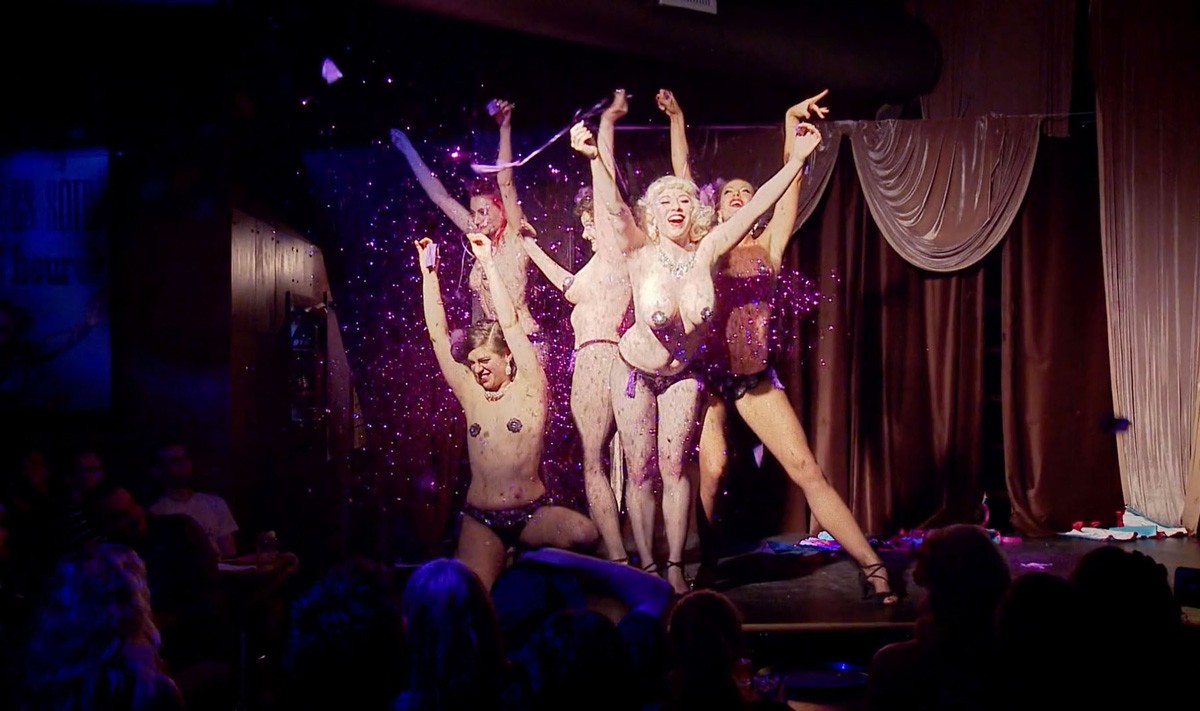
“Burlesque, for me, was never about defiance,” says burlesque dancer Angelique DeVil, one of the key personalities in Burlesque: Heart of the Glitter Tribe. “It was about that feeling of ‘I found my people.'”
She and many others. While the ostentatious world of pasties and lacy underthings was once risqué and taboo to polite society, neo-burlesque is now widely respected as an art form—although that doesn’t mean it’s fully understood. From comparisons to stripping to attracting grabby audience members, misconceptions and questions abound. And that’s where Burlesque (NOT to be confused with the lame Cher-Christina Aguilera film of the same name) comes in to address its mysteries through candid interviews from world-renowned male and female dancers.
In its near-80-minute run time, Burlesque acts as a thorough primer on the ongoing discussions within the scene’s culture and community. But where the film excels is in its subjects, outsiders and weirdos who made burlesque their creative and expressive outlet. Whether or not you notice narrative in the flash of bare skin, exotic costumes and feathered boas doesn’t matter. Director Jon Manning unravels the layers of artifice and makeup to allow us a personal look at these entertainers’ inner lives to make you notice, all while defining the stage as sacred. It’s not just a performance space; it’s also church.
Burlesque follows the stories of 12 dancers from the Glitter Tribe, a troupe based out of Portland, Oregon. Each dancer has his or her own vision for each performance, from campy to balletic to traditional to genderfuck. And the choreography, captured with attentive camera work, doesn’t disappoint. Burrito-themed striptease performances are rare, but dancer Babs Jamboree impresses with her tongue-in-cheek food number. Ivizia Dakini incorporates fire dancing and musical parody with a Jesus Christ puppet (and a, um, brow-raising routine while wearing a hijab). This aspect of burlesque as a modern theater of the absurd for political and social satire could use more elaboration, but there aren’t many dancers besides Dakini that employ it.
Viewers can delight in seeing the dancers’ bare backsides, sure, but real nakedness involves listening to them discuss their most vulnerable moments. Isaiah Esquire reveals sexual abuse in his past and how burlesque gave him control of his sexuality and body again. Babs openly discusses her alcoholism and struggle for sobriety. And Angelique wistfully recalls being “the black sheep of North Dakota” (no, that would be the assholes trying to build the Dakota Access Pipeline) and her unhappy pursuit for a professional dance career in Los Angeles before finally finding her tribe.
Manning developed a close friendship with each dancer over the course of a few years, especially Glitter Tribe member Zora Von Pavonine, who also acts as the film’s producer. Such fellowship clearly paid off, allowing us to glimpse into these performers’ lives and explore their passion for the art form, onstage and off. Their closeness and tight-knit bond is touching; witnessing tender moments of familial love among one another seems like a privilege.
The director also deftly touches on larger questions that surround the culture, such as defining sexiness. “[It’s] someone putting themselves out there,” says Babs. “That full commitment” to perform something adventurous and silly. Is burlesque feminist-friendly, or is it another form of objectification? There’s a mutual consensus among the dancers that it’s an empowering tool for performers to explore gender and share their body as they like without shame and on their terms. “I still consider myself a feminist because I do what I want with my body—it’s my rules, my boundaries,” says dancer Sandria Dore’. You don’t need to be a rhinestone-adorned, high-heeled dancer to agree.
Burlesque: Heart of the Glitter Tribe was directed by Jon Manning.
Aimee Murillo is calendar editor and frequently covers film and previously contributed to the OCW’s long-running fashion column, Trendzilla. Don’t ask her what her favorite movie is unless you want to hear her lengthy defense of Showgirls.

